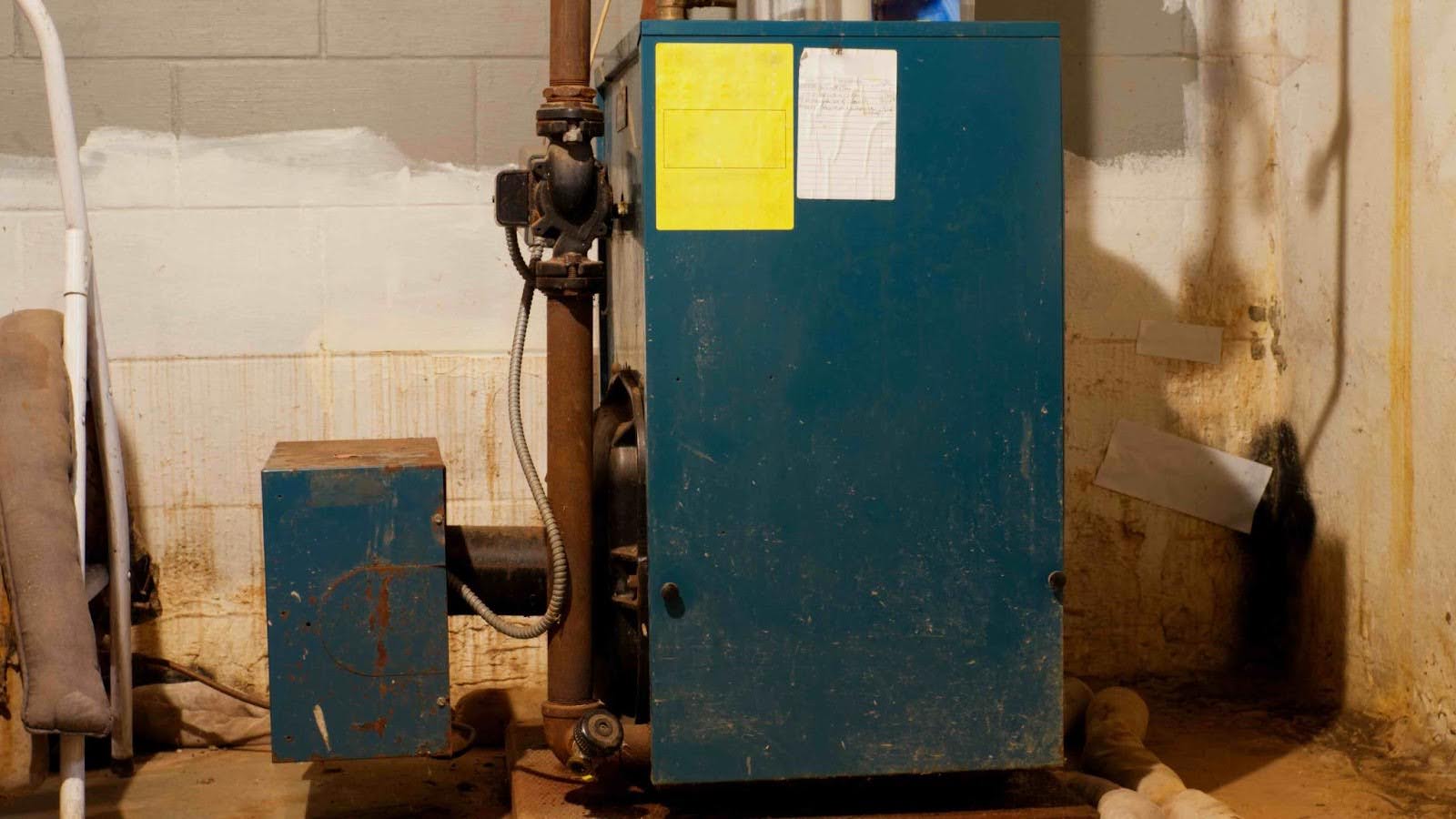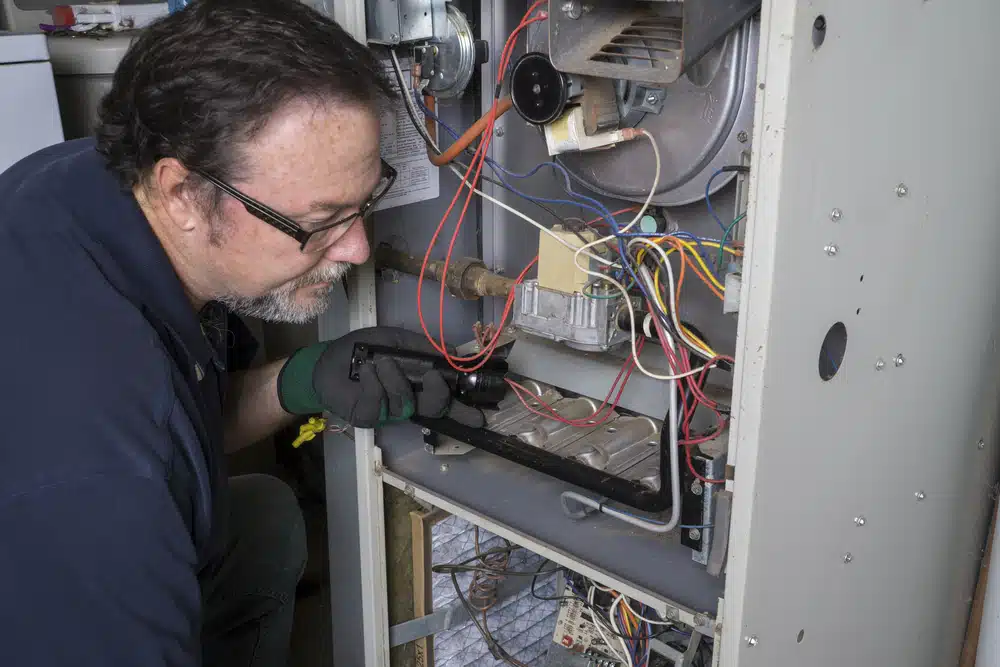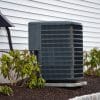
Determining the right time to replace your furnace is crucial for maintaining a comfortable home. In this informative guide, we’ll walk you through the key indicators and offer expert insights to help you make an informed decision.
Whether you’re a seasoned homeowner or new to furnace maintenance, we’re here to provide you with the knowledge you need to recognize when it’s time for a furnace upgrade.
1. Recognizing Signs for Furnace Replacement
When it comes to your home’s heating system, certain signs indicate it might be time for a furnace replacement. For different types of furnaces—natural gas, propane, and electric—there are specific indicators to watch out for.
If you notice any of these signs, especially if they persist despite basic troubleshooting, it’s time to seek professional advice from a licensed HVAC technician. A technician can assess the condition of your furnace and provide recommendations for furnace repair or furnace replacement. Failing to do so may result in more problems and a higher repair bill.
Natural Gas and Propane Furnaces:
- Inconsistent Heating: Uneven heating throughout your home or rooms that are significantly warmer or colder than others could signal issues with your furnace’s duct system.
- Strange Noises: Unusual sounds such as banging, rattling, or squealing could indicate mechanical problems or potential issues with the combustion process. We recommend contacting a licensed HVAC technician. You can also check out our blog post on if your furnace is making a knocking noise for more information.
- Increased Energy Bills: A sudden increase in energy costs without a corresponding change in usage may suggest decreased efficiency in your furnace, leading to higher fuel consumption.
Electric Furnaces:
- Failure to Turn On: If your electric furnace fails to turn on or experiences frequent power cycling, it could indicate issues with the heating elements, thermostat, or electrical connections.
- Weak Airflow: Reduced airflow or poor circulation of warm air throughout your home may signal problems with the blower motor or duct system.
- Tripped Circuit Breaker: Frequent tripping of the circuit breaker associated with your electric furnace could indicate electrical issues that need attention. Consider furnace repair or furnace replacement.

2. Efficiency and Energy Costs
If your furnace is old and lacks energy efficiency, replacing it with a newer model can offer significant benefits. Older furnaces, especially those nearing or exceeding the 15-20 year mark, tend to operate less efficiently, resulting in higher energy bills and increased environmental impact. By upgrading to a new, high-efficiency furnace, you can enjoy improved heating performance, lower energy costs, and reduced carbon footprint. Modern furnaces feature advanced technologies and higher AFUE (Annual Fuel Utilization Efficiency) ratings, ensuring more efficient fuel utilization and consistent heating throughout your home. Additionally, investing in an energy-efficient furnace can qualify you for rebates and incentives, making it a financially savvy decision in the long run. If you’ve ever wondered if the high-efficiency furnace is worth it, we consider it a proactive step towards enhancing comfort, reducing expenses, and promoting environmental sustainability in your home.
If you’re unsure about the efficiency of your furnace or how it impacts your energy costs, consider reaching out to Orzech. We can schedule a no-cost no-obligation quote to assess your home and furnace to determine its efficiency and recommend upgrades or replacements if necessary.
3. Age of Your Furnace
Regardless of the type of furnace you have, its age is an important consideration when deciding whether to replace it. Most furnaces have a lifespan of around 15-20 years. If your furnace is approaching or exceeding this age range, it’s wise to start planning for a replacement, even if it’s still functioning adequately. Older furnaces are more prone to breakdowns and can become less efficient over time.
As your furnace approaches the end of its expected lifespan, consult with a professional HVAC technician to assess its condition. They can provide insights into its remaining useful life and help you plan for a replacement before unexpected breakdowns occur.
4. Frequent Repairs and Maintenance

Certain repairs and maintenance tasks can serve as red flags indicating the need for a furnace replacement. If any of the below parts of your furnace are needing routine repair and maintenance, it might be time to replace your furnace.
- Pilot Light Issues: For gas and propane furnaces, problems with the pilot light, such as flickering or going out frequently, can indicate issues with the ignition system or a faulty thermocouple. Keep in mind, electric furnaces do not have a pilot light.
- Cracked Heat Exchanger: A cracked heat exchanger poses a serious safety hazard as it can lead to carbon monoxide leaks. Signs of a cracked heat exchanger include visible damage or soot buildup around the furnace.
- Blower Motor Failures: The blower motor is responsible for circulating warm air throughout your home. If it fails or experiences issues such as overheating or unusual noises, it may be time to replace your furnace.
Frequent repairs or maintenance issues with a furnace might mean that it’s best to consult with a professional HVAC technician. They can evaluate the overall condition of your furnace and recommend whether repair or replacement is the most cost-effective solution in the long run.
5. Safety Concerns and Consequences of Neglect
Safety should always be a top priority when it comes to your home’s heating system. Neglecting to replace or maintain your furnace can lead to severe consequences. Sometimes, it really is just time to replace your furnace.
Natural Gas and Propane Furnaces:
Carbon Monoxide Poisoning: Gas and propane furnaces can leak carbon monoxide, this is even more common among older models. Carbon monoxide is a colourless and odourless gas that poses a severe health risk if leaked into your home which can even result in death. Symptoms of carbon monoxide poisoning include headaches, nausea, dizziness, and fatigue. Without a functioning carbon monoxide alarm, detecting these leaks can be challenging, putting you and your family at risk of serious illness or even death. It is extremely important all homes have a working carbon monoxide detector installed.
Gas Leaks: Over time, wear and tear on gas lines or components within the furnace can lead to gas leaks. A gas leak poses a fire hazard and can result in explosions if left unchecked.
Electric Furnaces:
Electrical Fires: Neglected electrical components within an electric furnace can lead to short circuits or electrical fires. Without proper maintenance or replacement, damaged wiring or overloaded circuits can spark and ignite surrounding materials.
If you are worried about your furnace, or suspect any safety concerns with your furnace, we recommend that you consult with a professional HVAC technician to inspect your furnace and address any safety hazards to prevent future incidents.
6. Conclusion
In conclusion, recognizing the signs for furnace replacement is essential for maintaining a safe and efficient heating system in your home. Whether it’s high energy costs, frequent repairs, an aging furnace, safety concerns, or budget considerations, being attentive to these indicators will help you make informed decisions for a warm and comfortable living space.


